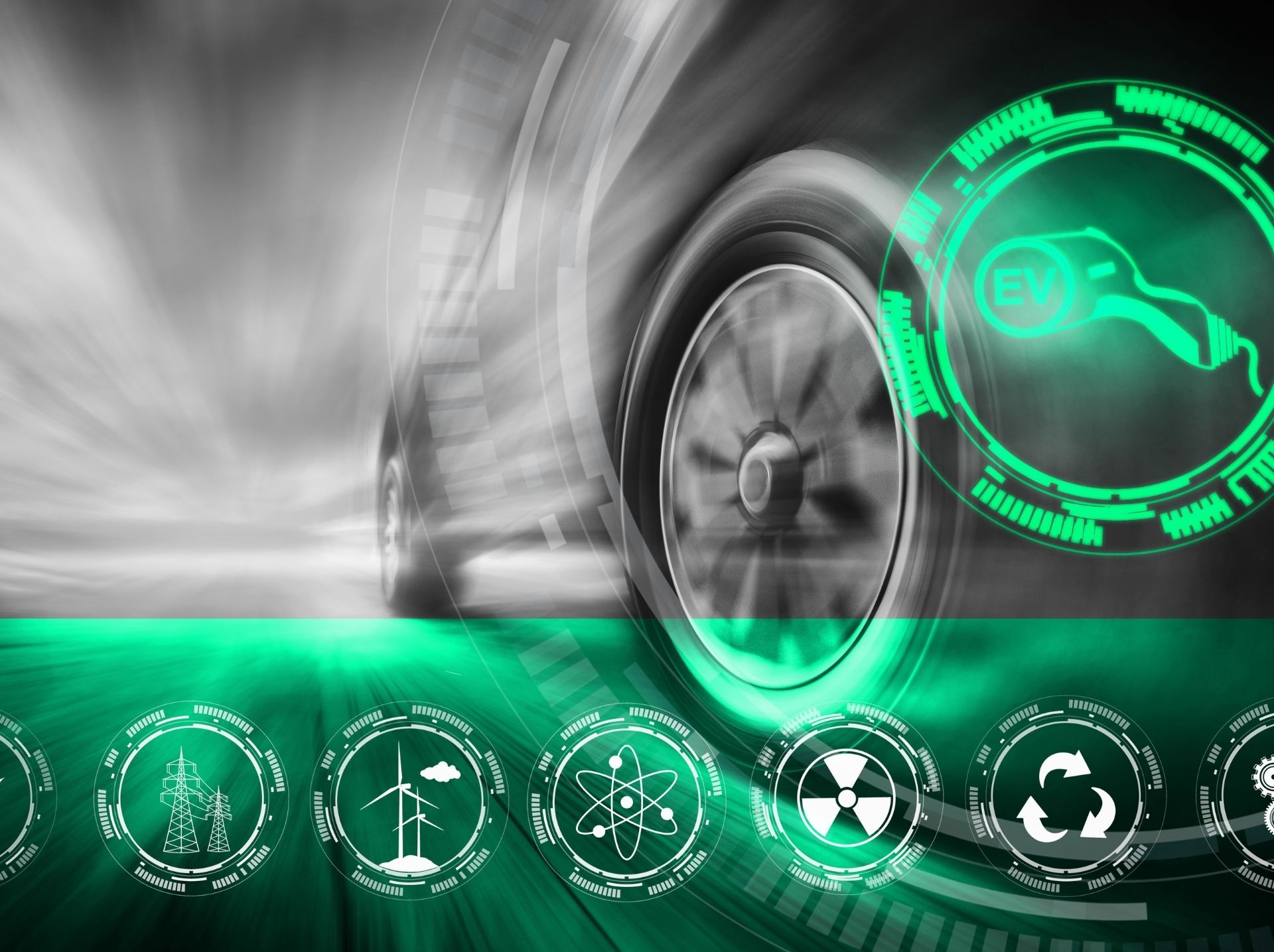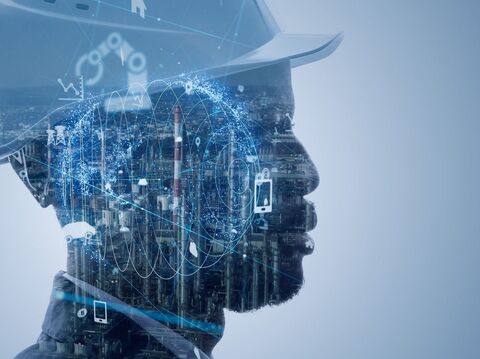How AI is Transforming the Automotive Sector?

Artificial intelligence (AI) has become a driving force in the automotive industry, transforming how cars are built, operated, and experienced. What started as simple voice recognition systems has evolved into advanced technologies like self-driving vehicles and predictive maintenance.
AI isn’t just about convenience—it’s also paving the way for greener and safer transportation.
In this blog, we’ll explore how AI powers everything from infotainment systems to reducing carbon emissions, redefining the future of mobility.
AI in Automotive Manufacturing and Production Optimisation
Manufacturers spend a lot of time on production that could go elsewhere. In 2023, they produced 94 million vehicles[1] globally.
AI-powered algorithms have changed automotive manufacturing by assisting in assembly and inspection. Robots and machines help with quality control by spotting any flaws in the product.
Machine learning (ML) has become important in almost every industry. Manual labour has been cut down, and AI auditing has taken its place.
AI and ML audits work well because they can find errors minutes after getting data. This has reduced the time and effort put into quality checks.
Additionally, automated guided vehicles (AGVs) transport materials within the factory. These small vehicles detect obstacles and find their way to the assembly area. Using AVGs in automation cuts production time and costs, boosts demand, and saves cash.
Enhanced Driver Safety Through AI in Automotive Industry
The Advanced Driver Assistance System (ADAS) is an AI tool that has made driving safe and personal. The anti-lock brake system (ABS) prevents wheel lock-ups when you apply sudden brakes.
Here are some more features like these that make driving a lot better:
-
Parallel Parking
Now, vehicles come with assisted parallel parking. Toyota and Prius have park assistants that use sensors to find empty parking spots. The system then provides a target box, and after selection, it parks itself into the spot.
-
Facial Recognition and Biometrics
Hyundai was the first manufacturer to install a biometric scan on its vehicles in 2019. Luxury brands took it further by adding facial recognition to their cars. You can set your driving preferences, like seat, mirror, temperature, and infotainment settings.
-
AI Dashcam and Drowsiness Detectors
People have started preferring cars that come with an AI dashcam. This tool predicts speed and proximity and can record footage in case of accidents. These self-learning tools warn drivers if they show signs of irregular driving, like dosing off or swerving.
-
Crash Testing Simulation
A key part of car manufacturing is passing a crash test for safety. Crash testing simulators help engineers predict results and adjust safety features. AI in cars predicts when airbags will deploy, how the body will react, and which side will cause the most damage.
Yes, this feature is vital for everyday vehicles, but it’s even more important in motorsports. If sports cars lack safety features, they can cause serious or fatal injuries to athletes.
Autonomous Vehicles: Current Impact and Future Prospects
Self-driving cars have been revolutionary in the automotive industry. The global autonomous vehicle market grows 16% each year and will reach USD 450 million by 2035[2]. Let’s see what this tremendous technology is.
There are 6 levels to autonomous driving:
-
No automation (complete feet, hands, and eye coordination)
-
Assisted automation (feet assistance and ABS)
-
Partial automation (hand assistance with automated steering)
-
High/Conditional automation (eye assistance with little human involvement)
-
Full automation (complete feet, hands, and eye assistance without human involvement)
-
Autonomous/Self-driving (no driver needed)
1.19 million people[3] die in road accidents every year. Using AI sensors and cameras for driving will lower these numbers in the future.
AI Use Cases in Automotive Industry
AI is transforming the automotive industry by improving safety, efficiency, and driving experience. It works in self-driving cars, smart manufacturing, and predictive maintenance. AI helps optimise traffic flow, reduce accidents, and enhance vehicle performance.
AI supports features like voice recognition, driver assistance systems, and personalised in-car experiences. AI in automotive is making transportation smarter, safer, and more efficient.
1. Tesla
Tesla is an obvious example when discussing AI use in the automotive industry. Tesla’s electric cars use artificial intelligence in cars for:
-
Lane changing
-
Proximity detection
-
Self-braking
-
Internal personalisation
2. Waymo
Waymo, Google’s self-driving cars, became a popular ride service with AI and ML to predict traffic and find the way. It has recently announced its partnership with Uber, and the two plan to expand safety in the autonomous ride-hailing industry in 2025.
3. Motional
Motional is a partnership between Aptiv and Hyundai that uses LiDAR, radar, and cameras as sensors to make an autonomous robotaxi. It has provided over 100,000 rides to people and has a record for zero at-fault accidents.
Motional has partnerships with Lyft and Cox Automotive to increase autonomous transport worldwide.
AI-Powered Connectivity and Smart Infotainment Systems
AI automotive is not only used to make driving safe; it also targets the entertainment appeal of cars. You may have enjoyed listening to your favourite songs while driving.
Infotainment systems use AI and ML in automotive to learn driver and passenger preferences. AI assistants in cars nowadays have speech recognition.
They can talk to the driver, show maps, control the climate, play music, and make phone calls. You need to tell it what to do.
Here's an example: The AI-powered Porsche Car Configurator offers customers billions of customisation options, fulfilling luxury car buyers' demand for entertainment options.
Predictive Maintenance and AI for Improved Vehicle Longevity
Machine learning has allowed manufacturers to use connected technology in automotive sector to set alerts to maintain their cars.
Companies use sensor data to predict potential vehicle failures, letting both drivers and manufacturers know that the car needs maintenance.
It cuts breakdowns, which extends vehicle life and lowers repair costs for consumers and fleet operators. Engine sensors quickly alert you to stop during a drive, avoiding accidents.
This proactive approach ensures that issues are addressed before they become serious problems. It also boosts overall safety, giving drivers more confidence on the road.
AI’s Role in Sustainability and Reducing Carbon Emissions in Automotive
AI in automotive industry improves routes, saves fuel, and helps with electric vehicles. AI in cars helps global sustainability goals by reducing the industry's carbon footprint.
What's more, predictive maintenance increases the car's life span, reducing constant purchases. AI-powered sensor dashcams and ABS have reduced accidents and, hence, damage to the car.
With a long-lasting sale, manufacturers don’t end up with a surplus of fleets. This sustainability has helped reduce carbon emissions caused while making the cars.
This sustainability has helped reduce carbon emissions caused while making cars. The automotive industry aims to keep improving sustainability and reduce its carbon footprint.
How GrowthJockey Empowers the Automotive Sector with AI Solutions?
GrowthJockey venture architects believes in using AI to make tech easier. Our AI-powered solutions for electric vehicles aim to build a green future by integrating AI into the automotive industry. Our experts recognise areas of improvement that AI can streamline.
We use modern AI in automotive to deal with challenges. Our goal is to increase efficiency in advanced autonomous tech. We use AI solutions to help you innovate, meet customer needs, and embrace sustainability.
Doesn’t matter if you’re looking for a consultation or just information on AI in the automotive sector, contact us to build and continue the journey together!
FAQs
-
How is AI being used in automotive industry?
AI improves manufacturing with automation and quality checks, increases driver safety with ADAS, aids autonomous vehicles, and uses predictive sensors to reduce car breakdowns. It's important in connectivity and upgrading vehicle performance for safer driving.
-
What is responsible AI in the automotive industry?
Responsible AI deals with ethical and security concerns when it comes to AI. Responsible AI addresses data privacy, algorithm bias, and transparency between businesses and customers. It focuses on building trust and prioritises safety, regulations, and fair outcomes in automotive uses.
-
What are the functions of AI in cars?
AI manages navigation, monitors safety, customises infotainment, and analyses vehicle issues. It plans fuel, improves the driver experience, and reduces risks with real-time hazard detection.
AI in automotive helps reduce carbon emissions and boosts sustainability. These functions improve the driving experience while ensuring safety and performance.
-
How is AI used in smart cars?
AI powers real-time navigation, integrates with smart tech and customises internal car systems like voice assistants and infotainment. Its biometrics and facial recognition make setting preferences for different drivers easy.
It also connects vehicles to improve communication with other cars and traffic systems for safer driving.








